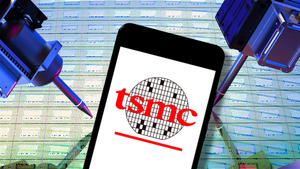Financial News
Cardiovascular Systems, Inc. Reports Fiscal 2023 First Quarter Financial Results
Conference Call Scheduled for Today, November 3, 2022, at 8:00 a.m. CT (9:00 a.m. ET)
- Revenues of $59.7 million increased 2.2% compared to first quarter last year
- Management reiterates fiscal 23 revenue guidance of $255 million to $265 million, representing 8% to 12% growth
Cardiovascular Systems, Inc. (CSI®) (NASDAQ: CSII), a medical device company developing and commercializing innovative interventional treatment systems for patients with peripheral and coronary artery disease, today reported financial results for its first quarter, ended September 30, 2022.
Executive Commentary – Scott Ward, Chairman, President and CEO
“We are pleased with the state of our business and our performance in the first quarter. Q1 revenue of $59.7 million represented 2.2% revenue growth compared to last year. Worldwide coronary revenue increased 7.9% and worldwide peripheral revenue decreased less than 1%.
“Fiscal Q1 is typically our lowest revenue quarter of the year due to lower procedure volumes in the July and August timeframe. This seasonality typically results in Q1 revenue that is approximately 5 to 6 percent lower than Q4.
“Compared to Q4, Q1 revenue declined 4.5%, with worldwide coronary and peripheral revenues declining 4.0% and 4.8%, respectfully. Given historical seasonality trends, our Q1 revenue results were in line with our expectations.
“In total, we executed our commercial and R&D plans throughout the quarter and remain on track to deliver strong revenue growth and achieve key product development milestones in fiscal 23.”
First Quarter Financial Highlights
CSI’s fiscal 2023 first quarter revenues were $59.7 million, representing an increase of $1.3 million, or 2.2% compared to the first quarter last year. Gross profit margin was 72.0%.
Selling, general and administrative expenses were $44.5 million, an increase of $2.6 million, or 6.3%. Research and development expenses decreased 9.6% to $9.1 million due to the timing of development activities.
First-quarter net loss of $10.6 million, or $0.27 per basic and diluted share, compared unfavorably to a loss of $8.6 million, or $0.22 per basic and diluted share, in the prior year period. The Adjusted EBITDA loss increased to $5.2 million from $1.2 million in the prior year.
As of September 30, 2022, CSI had cash and marketable securities totaling $143.7 million and no long-term borrowings.
Fiscal Year 2023 Guidance
Ward added, “Q1 results were consistent with our expectations. As a result, we are reiterating our fiscal 23 financial guidance. This guidance assumes continued improvement in US hospital procedure volumes and no new COVID headwinds over the course of the year. We believe the market recovery combined with improving commercial execution, competitive momentum, new product introductions and international expansion will drive our annual revenue to a range of $255 to $265 million, representing 8% to 12% annual growth.”
For the fiscal year ending June 30, 2023, CSI reiterates the following guidance:
- Revenue of $255 million to $265 million;
- Gross profit as a percentage of approximately 72% to 74% of revenues;
- Research and development expenses of approximately 16% to 17% of revenues;
- Net loss in a range of 9% to 11% of revenues; and
- Adjusted EBITDA near break-even.
Webcast Scheduled for Today at 8:00 a.m. CT (9:00 a.m. ET)
CSI will host a live conference call and webcast of its fiscal first quarter results today, November 3, 2022, at 8:00 a.m. CT (9:00 a.m. ET). Click here to access the live webcast. A replay will be available later the same day. Click here to participate in the conference call.
About Coronary Artery Disease (CAD)
CAD is a life-threatening condition and a leading cause of death in men and women globally. CAD occurs when a fatty material called plaque builds up on the walls of arteries that supply blood to the heart. The plaque buildup causes the arteries to harden and narrow (atherosclerosis), reducing blood flow. The risk of CAD increases if a person has one or more of the following: high blood pressure, abnormal cholesterol levels, diabetes, or family history of early heart disease. According to the Centers for Disease Control and Prevention, 18 million people in the United States have CAD, the most common form of heart disease. Heart disease claims more than 650,000 lives in the United States each year. According to estimates, arterial calcium is present in 38 percent of patients undergoing a PCI. Significant calcium contributes to poor stent delivery, expansion and wall apposition leading to poor outcomes and higher treatment costs in coronary interventions when traditional therapies are used, including a significantly higher occurrence of death and major adverse cardiac events (MACE).
About Peripheral Artery Disease (PAD)
Eighteen to 20 million Americans, most over age 65, suffer from PAD, which is caused by the accumulation of plaque in peripheral arteries reducing blood flow. Symptoms include leg pain when walking or at rest. Left untreated, PAD can lead to severe pain, immobility, non-healing wounds and eventually limb amputation. With risk factors such as diabetes and obesity on the rise, the prevalence of PAD is growing at double-digit rates.
About Cardiovascular Systems, Inc.
Cardiovascular Systems, Inc., based in St. Paul, Minn., is a medical device company focused on developing and commercializing innovative solutions for treating vascular and coronary disease. The company’s orbital atherectomy system treats calcified and fibrotic plaque in arterial vessels throughout the leg and heart and addresses many of the limitations associated with existing surgical, catheter and pharmacological treatment alternatives. For more information, visit www.csi360.com and follow us on LinkedIn and Twitter.
Safe Harbor
Certain statements in this news release are forward-looking statements within the meaning of the Private Securities Litigation Reform Act of 1995 and are provided under the protection of the safe harbor for forward-looking statements provided by that Act. For example, statements in this press release regarding (i) CSI’s strategy, goals and prospects; (ii) our expectation that we are on track to deliver strong revenue growth and achieve key product development milestones in fiscal 23; (iii) our expectations regarding improvement in U.S. hospital procedure volumes, COVID headwinds, market recovery, improving commercial execution, competitive momentum, new product introductions and international expansion; and (iv) anticipated revenue, gross profit, research and development expenses, net loss and Adjusted EBITDA, are forward-looking statements. These statements involve risks and uncertainties that could cause results to differ materially from those projected, including, but not limited to, the ongoing COVID-19 pandemic and the impact and scope thereof on us, our distribution partners, the supply chain and physicians and facilities, including government actions related to the COVID-19 outbreak, material delays and cancellations of procedures, delayed spending by healthcare providers, and distributor and supply chain disruptions; regulatory developments, clearances and approvals; approval of our products for distribution outside of the United States; approval of products for reimbursement and the level of reimbursement in the U.S. and foreign countries; dependence on market growth; agreements with third parties to sell their products; the ability of us and our distribution partners to successfully launch our products outside of the United States; our ability to maintain third-party supplier relationships and renew existing purchase agreements; our ability to maintain our relationships and agreements with distribution partners; the experience of physicians regarding the effectiveness and reliability of the products we sell; the reluctance of physicians, hospitals and other organizations to accept new products; the potential for unanticipated delays in enrolling medical centers and patients for clinical trials; actual clinical trial and study results; the impact of competitive products and pricing; our ability to comply with the financial covenants in our loan and security agreement and to make payments under and comply with the lease agreement for our corporate headquarters; unanticipated developments affecting our estimates regarding expenses, future revenues and capital requirements; the difficulty of successfully managing operating costs; our ability to manage our sales force strategy; actual research and development efforts and needs, including the timing of product development programs; successful collaboration on the development of new products; agreements with development partners, advisors and other third parties; the ability of us and these third parties to meet developmental, contractual and other milestones; contractual rights and obligations; technical challenges; our ability to obtain and maintain intellectual property protection for product candidates; fluctuations in results and expenses based on new product introductions, sales mix, unanticipated warranty claims, and the timing of project expenditures; our ability to manage costs; our actual financial resources and our ability to obtain additional financing; investigations or litigation threatened or initiated against us; court rulings and future actions by the FDA and other regulatory bodies; international trade developments; the effects of hurricanes, flooding, and other natural disasters on our business; the impact of federal corporate tax reform on our business, operations and financial statements; shutdowns of the U.S. federal government; the potential impact of any future strategic transactions; general economic conditions; and other factors detailed from time to time in CSI’s SEC reports, including its most recent annual report on Form 10-K and subsequent quarterly reports on Form 10-Q. CSI encourages you to consider all of these risks, uncertainties and other factors carefully in evaluating the forward-looking statements contained in this release. As a result of these matters, changes in facts, assumptions not being realized or other circumstances, CSI's actual results may differ materially from the expected results discussed in the forward-looking statements contained in this release. The forward-looking statements made in this release are made only as of the date of this release, and CSI undertakes no obligation to update them to reflect subsequent events or circumstances.
Product Disclosures:
Peripheral Products
Indications: The Stealth 360® PAD System and Diamondback 360® PAD System are percutaneous orbital atherectomy systems (OAS) indicated for use as therapy in patients with occlusive atherosclerotic disease in peripheral arteries and stenotic material from artificial arteriovenous dialysis fistulae.
Contraindications: The OAS are contraindicated for use in coronary arteries, bypass grafts, stents or where thrombus or dissections are present.
Warnings/Precautions: Although the incidence of adverse events is rare, potential events that can occur with atherectomy include: pain, hypotension, CVA/TIA, death, dissection, perforation, distal embolization, thrombus formation, hematuria, abrupt or acute vessel closure, or arterial spasm.
See the instructions for use for detailed information regarding the procedure, indications, contraindications, warnings, precautions, and potential adverse events. For further information call CSI at 1-877-274-0901 and/or consult CSI’s website at www.csi360.com.
Caution: Federal law (USA) restricts these devices to sale by or on the order of a physician.
The Stealth 360® PAD System and Diamondback 360® PAD System received FDA 510(k) clearance. The Stealth 360® PAD System is CE Marked.
Coronary Product
Indications: The Diamondback 360® Coronary Orbital Atherectomy System (OAS) is a percutaneous orbital atherectomy system indicated to facilitate stent delivery in patients with coronary artery disease (CAD) who are acceptable candidates for PTCA or stenting due to de novo, severely calcified coronary artery lesions.
Contraindications: The OAS is contraindicated when the ViperWire® guide wire cannot pass across the coronary lesion or the target lesion is within a bypass graft or stent. The OAS is contraindicated when the patient is not an appropriate candidate for bypass surgery, angioplasty, or atherectomy therapy, or has angiographic evidence of thrombus, or has only one open vessel, or has angiographic evidence of significant dissection at the treatment site and for women who are pregnant or children.
Warnings/Precautions: Performing treatment in excessively tortuous vessels or bifurcations may result in vessel damage; The OAS was only evaluated in severely calcified lesions, A temporary pacing lead may be necessary when treating lesions in the right coronary and circumflex arteries; On-site surgical back-up should be included as a clinical consideration; Use in patients with an ejection fraction (EF) of less than 25% has not been evaluated.
See the instructions for use for detailed information regarding the procedure, indications, contraindications, warnings, precautions, and potential adverse events. For further information call CSI at 1-877-274-0901 and/or consult CSI’s website at www.csi360.com.
Caution: Federal law (USA) restricts these devices to sale by or on the order of a physician.
The Diamondback 360® Coronary OAS is FDA PMA approved and CE Marked.
Cardiovascular Systems, Inc. Consolidated Statements of Operations (Dollars in Thousands) (unaudited) |
||||||||
|
|
|
||||||
|
|
Three Months Ended |
||||||
|
|
September 30, |
||||||
|
|
|
2022 |
|
|
|
2021 |
|
|
|
|
|
|
||||
Net revenues |
|
$ |
59,673 |
|
|
$ |
58,370 |
|
Cost of goods sold |
|
|
16,698 |
|
|
|
14,308 |
|
Gross profit |
|
|
42,975 |
|
|
|
44,062 |
|
Expenses: |
|
|
|
|
||||
Selling, general and administrative |
|
|
44,475 |
|
|
|
41,851 |
|
Research and development |
|
|
9,056 |
|
|
|
10,022 |
|
Amortization of intangible assets |
|
|
346 |
|
|
|
304 |
|
Total expenses |
|
|
53,877 |
|
|
|
52,177 |
|
Loss from operations |
|
|
(10,902 |
) |
|
|
(8,115 |
) |
Other (income) expense, net |
|
|
(252 |
) |
|
|
367 |
|
Loss before income taxes |
|
|
(10,650 |
) |
|
|
(8,482 |
) |
(Benefit) provision for income taxes |
|
|
(19 |
) |
|
|
136 |
|
Net loss |
|
$ |
(10,631 |
) |
|
$ |
(8,618 |
) |
|
|
|
|
|
||||
Basic and diluted earnings per share |
|
$ |
(0.27 |
) |
|
$ |
(0.22 |
) |
|
|
|
|
|
||||
Basic and diluted weighted average shares outstanding |
|
|
39,607,022 |
|
|
|
39,087,472 |
|
Cardiovascular Systems, Inc. Consolidated Balance Sheets (Dollars in Thousands) (unaudited) |
||||||||
|
|
|
|
|||||
|
September 30, |
|
June 30, |
|||||
|
|
2022 |
|
|
|
2022 |
|
|
|
|
|
|
|||||
ASSETS |
|
|
|
|||||
Current assets |
|
|
|
|||||
Cash and cash equivalents |
$ |
62,850 |
|
$ |
66,424 |
|||
Marketable securities |
|
80,898 |
|
|
|
93,409 |
|
|
Accounts receivable, net |
|
40,259 |
|
|
|
39,678 |
|
|
Inventories |
|
37,944 |
|
|
|
34,567 |
|
|
Prepaid expenses and other current assets |
|
9,125 |
|
|
|
7,768 |
|
|
Total current assets |
|
231,076 |
|
|
|
241,846 |
|
|
Property and equipment, net |
|
28,959 |
|
|
|
29,035 |
|
|
Intangible assets, net |
|
15,388 |
|
|
|
15,734 |
|
|
Strategic investments |
|
34,027 |
|
|
|
33,425 |
|
|
Other assets |
|
2,588 |
|
|
|
2,637 |
|
|
Total assets |
$ |
312,038 |
|
|
$ |
322,677 |
|
|
|
|
|
|
|||||
LIABILITIES AND STOCKHOLDERS’ EQUITY |
|
|
|
|||||
Current liabilities |
|
|
|
|||||
Accounts payable |
$ |
16,757 |
|
|
$ |
14,383 |
|
|
Accrued expenses |
|
19,704 |
|
|
|
23,464 |
|
|
Deferred revenue |
|
694 |
|
|
|
2,107 |
|
|
Total current liabilities |
|
37,155 |
|
|
|
39,954 |
|
|
Long-term liabilities |
|
|
|
|||||
Financing obligation |
|
20,208 |
|
|
|
20,298 |
|
|
Other liabilities |
|
12,522 |
|
|
|
12,945 |
|
|
Total liabilities |
|
69,885 |
|
|
|
73,197 |
|
|
Commitments and contingencies |
|
— |
|
|
|
— |
|
|
Total stockholders’ equity |
|
242,153 |
|
|
|
249,480 |
|
|
Total liabilities and stockholders’ equity |
$ |
312,038 |
|
|
$ |
322,677 |
|
|
Non-GAAP Financial Measures
To supplement CSI's consolidated condensed financial statements prepared in accordance with GAAP, CSI uses a non-GAAP financial measure referred to as "Adjusted EBITDA" in this release.
Reconciliations of these non-GAAP measures to the most comparable U.S. GAAP measures for the respective periods can be found in the following tables. In addition, an explanation of the manner in which CSI's management uses these measures to conduct and evaluate its business, the economic substance behind management's decision to use these measures, the substantive reasons why management believes that these measures provide useful information to investors, the material limitations associated with the use of these measures and the manner in which management compensates for those limitations is included following the reconciliation tables.
Adjusted EBITDA (Dollars in Thousands) (unaudited) |
||||||||
|
|
|
||||||
|
|
Three Months Ended |
||||||
|
|
September 30, |
||||||
|
|
|
2022 |
|
|
|
2021 |
|
|
|
|
|
|||||
Net loss |
$ |
(10,631 |
) |
|
$ |
(8,618 |
) |
|
Less: Other (income) and expense, net |
|
(252 |
) |
|
|
367 |
|
|
Less: (Benefit) provision for income taxes |
|
(19 |
) |
|
|
136 |
|
|
Loss from operations |
|
(10,902 |
) |
|
|
(8,115 |
) |
|
Add: Stock-based compensation |
|
4,438 |
|
|
|
5,672 |
|
|
Add: Depreciation and amortization |
|
1,220 |
|
|
|
1,258 |
|
|
Adjusted EBITDA |
$ |
(5,244 |
) |
|
$ |
(1,185 |
) |
|
Use and Economic Substance of Non-GAAP Financial Measures Used by CSI and Usefulness of Such Non-GAAP Financial Measures to Investors
CSI uses Adjusted EBITDA as a supplemental measure of performance and believes this measure facilitates operating performance comparisons from period to period and company to company by factoring out potential differences caused by depreciation and amortization expense and stock-based compensation. CSI's management uses Adjusted EBITDA to analyze the underlying trends in CSI's business, assess the performance of CSI's core operations, establish operational goals and forecasts that are used to allocate resources and evaluate CSI's performance period over period and in relation to its competitors' operating results. Additionally, CSI's management is evaluated on the basis of Adjusted EBITDA when determining achievement of their incentive compensation performance targets.
CSI believes that presenting Adjusted EBITDA provides investors greater transparency to the information used by CSI's management for its financial and operational decision-making and allows investors to see CSI's results "through the eyes" of management. CSI also believes that providing this information better enables CSI's investors to understand CSI's operating performance and evaluate the methodology used by CSI's management to evaluate and measure such performance.
The following is an explanation of each of the items that management excluded from Adjusted EBITDA and the reasons for excluding each of these individual items:
-- Stock-based compensation. CSI excludes stock-based compensation expense from its non-GAAP financial measures primarily because such expense, while constituting an ongoing and recurring expense, is not an expense that requires cash settlement. CSI's management also believes that excluding this item from CSI's non-GAAP results is useful to investors to understand the application of stock-based compensation guidance and its impact on CSI's operational performance, liquidity and its ability to make additional investments in the company, and it allows for greater transparency to certain line items in CSI's financial statements.
-- Depreciation and amortization expense. CSI excludes depreciation and amortization expense from its non-GAAP financial measures primarily because such expenses, while constituting ongoing and recurring expenses, are not expenses that require cash settlement and are not used by CSI's management to assess the core profitability of CSI's business operations. CSI's management also believes that excluding these items from CSI's non-GAAP results is useful to investors to understand CSI's operational performance, liquidity and its ability to make additional investments in the company.
Material Limitations Associated with the Use of Non-GAAP Financial Measures and Manner in which CSI Compensates for these Limitations
Non-GAAP financial measures have limitations as analytical tools and should not be considered in isolation or as a substitute for CSI's financial results prepared in accordance with GAAP. Some of the limitations associated with CSI's use of these non-GAAP financial measures are:
-- Items such as stock-based compensation do not directly affect CSI's cash flow position; however, such items reflect economic costs to CSI and are not reflected in CSI's "Adjusted EBITDA" and therefore these non-GAAP measures do not reflect the full economic effect of these items.
-- Non-GAAP financial measures are not based on any comprehensive set of accounting rules or principles and therefore other companies may calculate similarly titled non-GAAP financial measures differently than CSI, limiting the usefulness of those measures for comparative purposes.
-- CSI's management exercises judgment in determining which types of charges or other items should be excluded from the non-GAAP financial measures CSI uses. CSI compensates for these limitations by relying primarily upon its GAAP results and using non-GAAP financial measures only supplementally. CSI provides full disclosure of each non-GAAP financial measure.
-- CSI provides detailed reconciliations of each non-GAAP measure to its most directly comparable GAAP measure. CSI encourages investors to review these reconciliations. CSI qualifies its use of non-GAAP financial measures with cautionary statements as set forth above.
View source version on businesswire.com: https://www.businesswire.com/news/home/20221103005162/en/
Contacts
Cardiovascular Systems, Inc.
Jack Nielsen
Vice President, Investor Relations & Corporate Communications
(651) 202-4919
j.nielsen@csi360.com
More News
View More





Quotes delayed at least 20 minutes.
By accessing this page, you agree to the following
Privacy Policy and Terms Of Service.



